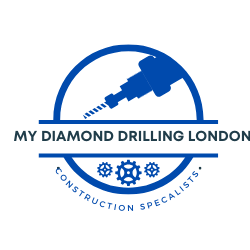What is core drilling?
Core drilling is a versatile and essential technique used in various industries to extract cylindrical samples from materials such as concrete, rock, and ice. By providing intact cores for analysis, this method allows professionals to gather valuable data about the composition, strength, and other properties of the sampled substrate. In this article, we'll explore the fundamentals of core drilling, including its different types, applications, and the equipment used in the process. Whether you're a contractor, engineer, or researcher, understanding core drilling can help you make informed decisions and achieve successful project outcomes.

The
core drilling process involves two main types: soft coring and hard coring.
Soft coring is used for unconsolidated materials and can reach depths of up to 500 feet. This method employs nested barrels, with the inner barrel extending to capture the sample while the outer barrel serves as a protective casing to prevent hole collapse and sample contamination.
Hard coring, also known as diamond coring, is used for extracting samples from competent rock and can reach depths of up to 5,000 feet. In this process, the outer barrel extends first, washing the surface with drilling fluid or air to maintain sample integrity. A diamond-coated drill bit is used to penetrate the hard substrate.
Applications of Core Drilling
Core drilling is an essential tool for projects that require accurate information about subsurface conditions. While alternative methods like mud rotary drilling can provide some data, they may miss crucial details. Core drilling ensures a comprehensive understanding of geological formations, minimizing the risk of errors and saving time and resources in the long run. This technique is particularly valuable for high-stakes projects where precise data is critical for success.
Core Drilling Materials and Equipment
The choice of drill bit material depends on the hardness of the substrate being sampled. Carbide-tipped core bits are suitable for softer materials, while diamond-tipped bits are necessary for harder substances like sapphire, advanced ceramics, and natural stones. Counterintuitively, softer bond materials are used for harder substrates to allow for fast, free drilling, while harder bond materials are employed for softer, abrasive materials to extend bit life.
In conclusion, core drilling is a powerful technique that enables the extraction of intact samples from various materials, providing valuable insights into their properties and composition. By understanding the different types of core drilling, their applications, and the appropriate materials and equipment, professionals can leverage this method to gather critical data for successful project planning and execution.
What is the difference between core drilling and diamond drilling ?
While core drilling and diamond drilling both use hollow drill bits to create precise holes, diamond drilling specifically uses drill bits impregnated with diamond particles to cut through hard materials like concrete, stone, and metal. Core drilling, on the other hand, can use various drill bit materials depending on the substrate being sampled.
Are core drill bits actually made of diamond?
Not all core drill bits are made of diamond. Carbide-tipped core bits are often used for softer materials, while diamond-tipped bits are reserved for harder substrates. It's important to note that even diamond-tipped core bits are not made entirely of diamond; they are typically impregnated with diamond particles in a metal matrix.
Can core drilling be used underwater?
Yes, core drilling can be performed underwater using specialized equipment. This technique is often used in geotechnical and marine engineering projects to gather samples from the seafloor or underwater structures.
Is core drilling suitable for residential projects?
While core drilling is more commonly used in commercial, industrial, and scientific applications, it can be employed in residential projects when precise, minimally invasive holes are required. For example, core drilling might be used to create openings for plumbing or electrical lines in concrete foundations or walls. If you're considering core drilling for a residential project in London , it's best to consult with a professional drilling company to assess the feasibility and necessary equipment.
How long does core drilling take?
The duration of a core drilling project depends on various factors, including the depth of drilling, the hardness of the material being drilled, and the diameter of the core being extracted. In general, harder materials and deeper, larger-diameter cores will require more time to drill. A professional drilling contractor can provide an estimated timeline based on the specific requirements of your project.
Give us a call no jobs too small
Don't let your construction or renovation project face unnecessary delays or complications. Whether you're in the heart of Central London, the bustling areas of East London, the historic streets of West London, the vibrant communities of South London, or the leafy suburbs of North London, our core drilling services cover every corner of the capital. With My Diamond Drilling London, you're choosing a partner who understands the importance of precision, efficiency, and minimal disruption to your site. Contact us today to discuss your core drilling needs and receive a tailored quote. Ensure your project's success with our expert team by your side, providing top-notch service and peace of mind.
